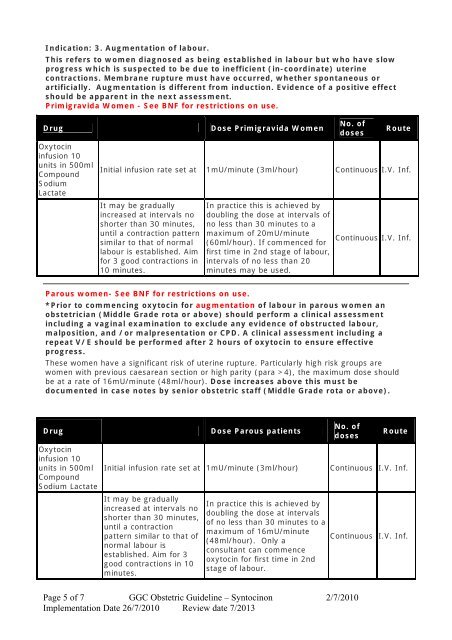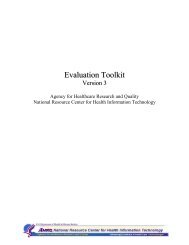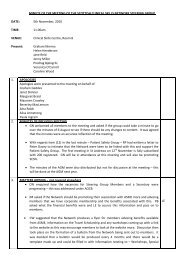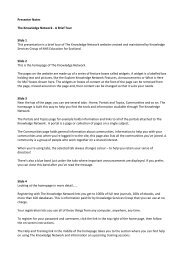Syntocinon guideline GGC.pdf
Syntocinon guideline GGC.pdf
Syntocinon guideline GGC.pdf
Create successful ePaper yourself
Turn your PDF publications into a flip-book with our unique Google optimized e-Paper software.
Indication: 3. Augmentation of labour.<br />
This refers to women diagnosed as being established in labour but who have slow<br />
progress which is suspected to be due to inefficient (in-coordinate) uterine<br />
contractions. Membrane rupture must have occurred, whether spontaneous or<br />
artificially. Augmentation is different from induction. Evidence of a positive effect<br />
should be apparent in the next assessment.<br />
Primigravida Women - See BNF for restrictions on use.<br />
Drug<br />
Oxytocin<br />
infusion 10<br />
units in 500ml<br />
Compound<br />
Sodium<br />
Lactate<br />
Dose Primigravida Women<br />
No. of<br />
doses<br />
Route<br />
Initial infusion rate set at 1mU/minute (3ml/hour) Continuous I.V. Inf.<br />
It may be gradually<br />
increased at intervals no<br />
shorter than 30 minutes,<br />
until a contraction pattern<br />
similar to that of normal<br />
labour is established. Aim<br />
for 3 good contractions in<br />
10 minutes.<br />
In practice this is achieved by<br />
doubling the dose at intervals of<br />
no less than 30 minutes to a<br />
maximum of 20mU/minute<br />
(60ml/hour). If commenced for<br />
first time in 2nd stage of labour,<br />
intervals of no less than 20<br />
minutes may be used.<br />
Continuous I.V. Inf.<br />
Parous women- See BNF for restrictions on use.<br />
*Prior to commencing oxytocin for augmentation of labour in parous women an<br />
obstetrician (Middle Grade rota or above) should perform a clinical assessment<br />
including a vaginal examination to exclude any evidence of obstructed labour,<br />
malposition, and /or malpresentation or CPD. A clinical assessment including a<br />
repeat V/E should be performed after 2 hours of oxytocin to ensure effective<br />
progress.<br />
These women have a significant risk of uterine rupture. Particularly high risk groups are<br />
women with previous caesarean section or high parity (para >4), the maximum dose should<br />
be at a rate of 16mU/minute (48ml/hour). Dose increases above this must be<br />
documented in case notes by senior obstetric staff (Middle Grade rota or above).<br />
Drug<br />
Oxytocin<br />
infusion 10<br />
units in 500ml<br />
Compound<br />
Sodium Lactate<br />
Dose Parous patients<br />
Initial infusion rate set at 1mU/minute (3ml/hour)<br />
It may be gradually<br />
increased at intervals no<br />
shorter than 30 minutes,<br />
until a contraction<br />
pattern similar to that of<br />
normal labour is<br />
established. Aim for 3<br />
good contractions in 10<br />
minutes.<br />
In practice this is achieved by<br />
doubling the dose at intervals<br />
of no less than 30 minutes to a<br />
maximum of 16mU/minute<br />
(48ml/hour). Only a<br />
consultant can commence<br />
oxytocin for first time in 2nd<br />
stage of labour.<br />
No. of<br />
doses<br />
Route<br />
Continuous I.V. Inf.<br />
Continuous I.V. Inf.<br />
Page 5 of 7 <strong>GGC</strong> Obstetric Guideline – <strong>Syntocinon</strong> 2/7/2010<br />
Implementation Date 26/7/2010 Review date 7/2013
















